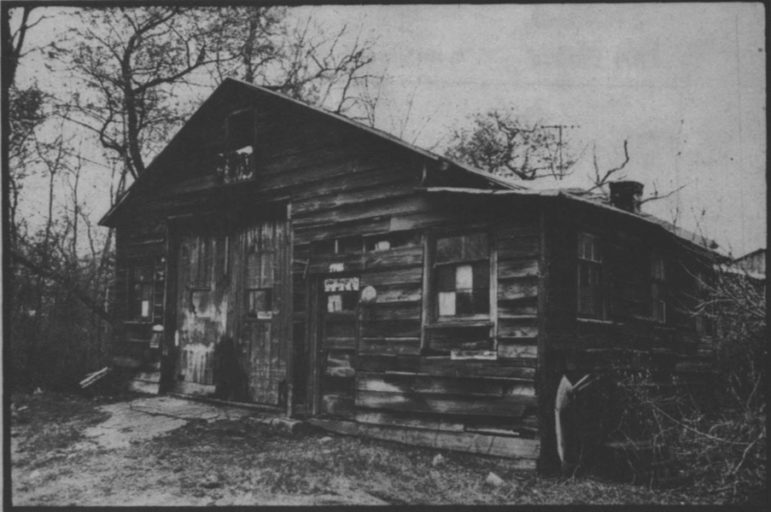Mayor Eric Adams commissioned a new Staten Island Ferry boat dubbed Sandy Ground—named after New York’s first free Black community, founded on the island more than two centuries ago. In 1982, City Limits published an interview with William “Pops” Pedro, who was then 100 years old and had lived his whole life in the historic enclave.

Laurie Peek/City Limits archives
A blacksmith shop in Staten Island’s Sandy Ground neighborhood in 1982.Flashback Friday is a series highlighting stories from City Limits’ 45-year archive.
On Friday, in honor of Black History Month, Mayor Eric Adams commissioned a new Staten Island Ferry boat dubbed Sandy Ground—named after New York’s first free Black community, founded on the island’s south shore more than two centuries ago.
Settled in 1828 by ferry boat operator John Jackson, the first Black person to own property on Staten Island, Sandy Ground was once home to a thriving local oyster industry and was a stop on the Underground Railroad, according to the city. Several landmarked sites remain today, including a cemetery and the still-operating A.M.E. Zion Church.
In 1982, City Limits published a feature story on the Sandy Ground community, where residents and members of the Sandy Ground Historical Society at the time were campaigning to get the neighborhood added to the National Register of Historic Places—an effort to curb “encroaching development” in the form of “garden-apartment style row houses.” From that earlier story:
“One of the reasons we got organized was that we thought being on the National Register would help curtail the development,” said Yvonne Taylor, president of the historical society and granddaughter of an oysterman. “We found that it doesn’t, but we still want to go on. We’ve spoken with the developers. They’re honest about the fact that they want to make money. We just wish that they’d build with the community in mind, but they’re not. If they’d build on larger tracts of land rather than building row houses, it would keep in character with the community.”
The story featured an interview with William “Pops” Pedro, who was then 100 years old and had lived his whole life in the historic enclave. He offered recollections of his boyhood in the community, including the shellfish he and his neighbors would catch and eat from Arthur Kill, the fresh fruits and vegetables they grew themselves and his memories of the Great Blizzard of 1988, when the snow reached over the tops of local houses.
“I looked out, all I could see was white snow. When you opened the door, all the snow would come in the door,” Pedro told then-City Limits’ reporters Yvette Moore and Tim Ledwith (nearly 30 years later, Ledwith revisited that interview in another piece for City Limits on Sandy Ground’s legacy).
“This used to be a pretty place at one time,” Pedro told the reporters. “Olden times, you’d help one another, but now you don’t.”
You can read the full piece “Staten Island’s Sandy Ground Holds On To History” from our June/July 1982 issue below:









One thought on “Flashback Friday: Staten Island’s Sandy Ground, 1982”
It’s always amazing to re-visit the history once in a while, especially to compare the past to the present. I mean just look at how far Staten Island has come.
Goes to show how time really flies!
Thanks for sharing the photo of the blacksmith shop too Jeanmarie.